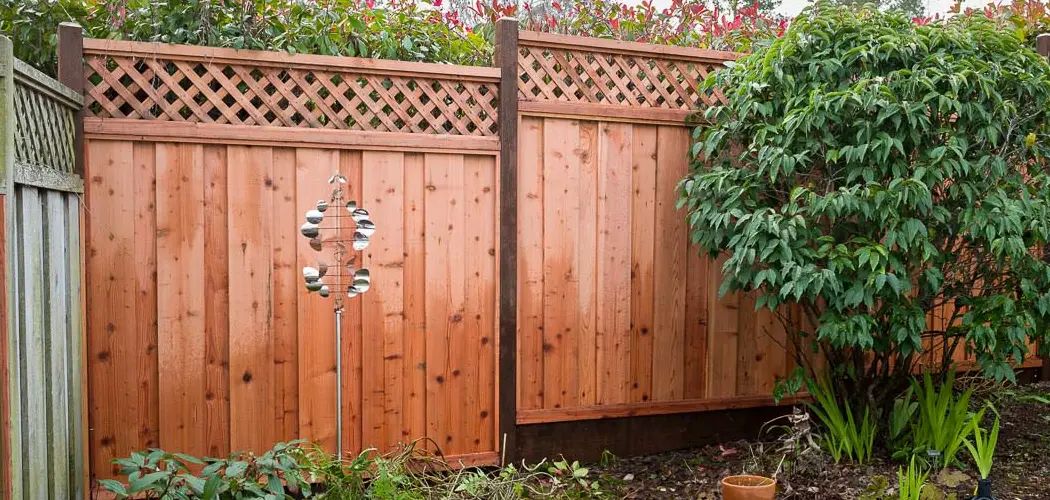Are you tired of the noise from your neighbors’ backyard parties or street traffic? Do you want a peaceful and quiet outdoor space to relax in? One effective way to reduce noise pollution is by soundproofing your fence.
Soundproofing a fence is an effective way to reduce noise pollution in your living environment.
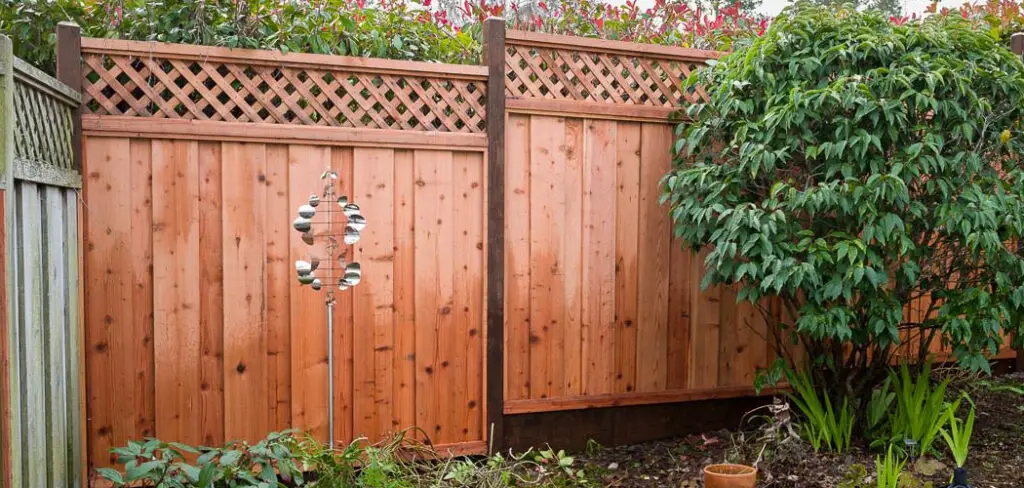
Whether it’s the hustle and bustle of a busy street, the clamor of construction work, or just the general noise from neighbors, a soundproof fence can significantly reduce unwanted sounds. This guide on how to soundproof a fence will introduce you to the basics of soundproofing a fence, covering the materials needed, methods used, and tips to enhance the effectiveness of your sound barrier.
By the end of this guide, you will have the knowledge to create a more peaceful and quiet outdoor space.
What are the Benefits of Soundproofing a Fence?
In addition to reducing noise pollution, soundproofing a fence has many other benefits. These include:
- Privacy: A soundproof fence can also serve as a privacy screen, keeping prying eyes and curious neighbors from seeing into your yard.
- Increased Property Value: A well-designed and effective sound barrier can add value to your property, making it more appealing to potential buyers.
- Better Sleep: A soundproof fence can significantly improve your sleep quality if you have trouble sleeping due to external noise.
- Protects Your Outdoor Activities: Whether it’s reading a book, hosting a small gathering, or simply enjoying some alone time outdoors, a soundproof fence can help create a peaceful and undisturbed experience.
These are just a few of the benefits of soundproofing your fence. Now, let’s dive into the steps involved in soundproofing a fence.
Materials Needed for Soundproofing a Fence
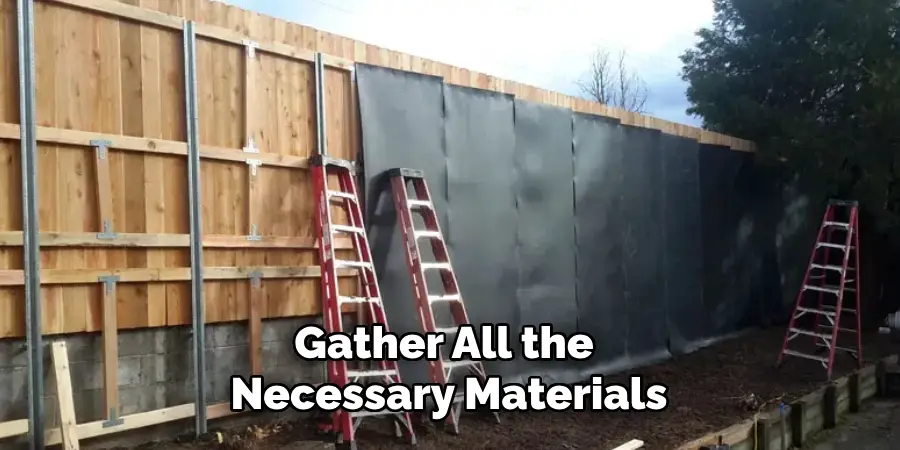
Before you begin soundproofing your fence, gather all the necessary materials. These may include:
- Mass Loaded Vinyl (MLV): This is the key material used in soundproofing fences. It is a dense and flexible vinyl sheet that blocks noise from passing through.
- Sound Absorbing Mats: These are highly effective in absorbing sound and can be installed between the fence posts.
- Acoustic Caulk: This is used to seal any gaps or cracks in your fence, preventing noise from leaking through.
- Soundproofing Sealant Tape: Similar to acoustic caulk, this tape is used to seal gaps and cracks along with the edges of the fence.
- Wood Screws: These will be used to secure the MLV sheets and mats onto your fence posts.
- Saw or Cutter: This will be needed to cut the MLV sheets and mats to fit your fence posts.
- Measuring Tape: To ensure accurate measurements for cutting materials.
Once you have gathered all the necessary materials, it’s time to start the soundproofing process.
10 Easy Steps on How to Soundproof a Fence
Step 1. Measure Your Fence:
The first step in soundproofing your fence is accurately measuring the area you want to cover. Use a measuring tape to determine the length and height of your fence, ensuring you measure each section if your fence varies in size.
This step is crucial as it will dictate how much material you’ll need to purchase. Adding a little extra to your measurements is always a good idea to account for any potential mistakes or adjustments needed during the installation process.
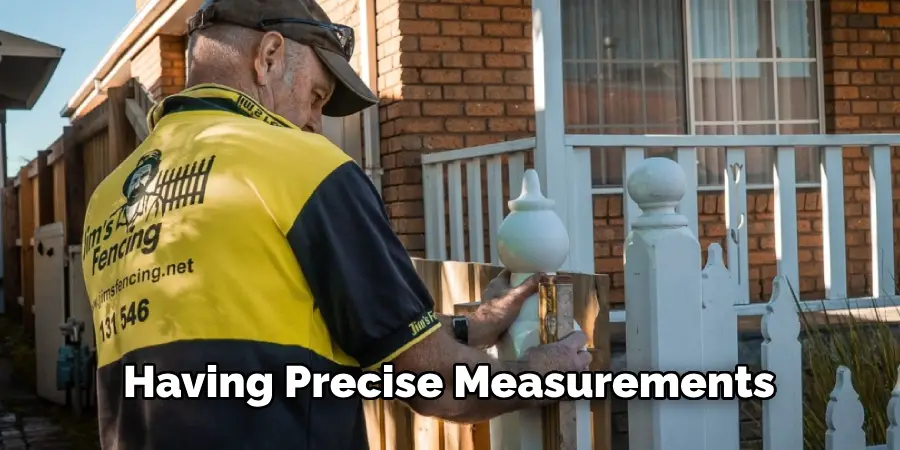
Having precise measurements helps calculate the amount of Mass-Loaded Vinyl (MLV), sound-absorbing mats, and other materials you will need. It also ensures that when you cut your materials to size, they will fit perfectly, leaving no gaps for sound to travel through. Remember, even the smallest gap can significantly reduce the effectiveness of your soundproofing efforts, so accuracy here is key.
Step 2. Prepare the Fence:
Before installing soundproofing materials, thoroughly preparing your fence is important. This involves cleaning the fence’s surface to ensure it’s free from dirt, debris, and any old paint that may interfere with the adhesion of materials. If repairs are needed, such as fixing broken boards or securing loose posts, complete these before proceeding.
A stable and clean fence will support the soundproofing materials better and ensure a smoother installation process. If your fence is metal, remove any rust and apply a rust-inhibitor primer to prevent future corrosion. Preparing your fence properly lays the foundation for an effective soundproofing project.
Step 3. Install Mass Loaded Vinyl (MLV):
Once your fence is prepared, installing the Mass Loaded Vinyl (MLV) is next. Begin at one end of the fence and roll the MLV out along its length. If your fence is taller than the width of the MLV, you may need to install it in sections, ensuring that each piece overlaps the one below it by at least an inch to prevent sound leaks.

Use wood screws to secure the MLV to the fence, placing screws at the top, middle, and bottom of the vinyl to hold it firmly in place. For a more refined look, you can trim any excess MLV at the top or sides of the fence, but be careful not to expose any gaps. This layer of MLV will act as your primary barrier against noise, effectively blocking it from passing through your fence.
Step 4. Add Sound Absorbing Mats:
After installing the Mass Loaded Vinyl, the next step is to add sound-absorbing mats between the fence posts. These mats work by absorbing sound waves, further reducing noise transmission through the fence. To install, cut the mats to the size of the spaces between your fence posts. It may be helpful to use a template made from cardboard to ensure consistent sizing.
Once cut, secure the mats to the fence with either wood screws or by using a high-grade outdoor adhesive. Ensure the mats are snug against the posts and that there are no gaps around the edges where sound could leak through. This additional layer enhances the sound-blocking capabilities of your fence, making your outdoor space even more serene.
Step 5. Seal Gaps with Acoustic Caulk:
Even with the mass-loaded vinyl (MLV) and sound-absorbing mats in place, gaps or cracks in your fence can undermine your soundproofing efforts. This is where acoustic caulk comes in handy. Carefully inspect your fence for any openings – no matter how small – and apply acoustic caulk to seal them. Focus especially on areas around the fence posts and edges where different materials meet.
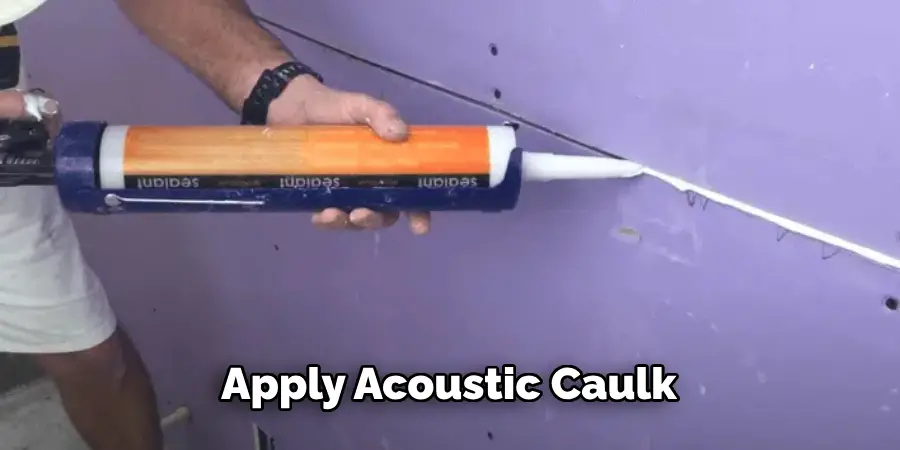
A continuous bead of caulk will create an air-tight seal, preventing sound waves from passing through. Allow the caulk to dry completely according to the manufacturer’s instructions before proceeding to the next step. Sealing these gaps not only enhances the soundproofing quality but also improves the overall durability of your fence by protecting it against moisture and pests.
Step 6. Apply Soundproofing Sealant Tape:
Following the application of acoustic caulk, the next step involves reinforcing the seal with soundproofing sealant tape. This tape should be applied along the edges where the Mass Loaded Vinyl (MLV) meets the fence posts and over any seams where sections of MLV overlap.
The tape acts as an additional barrier to sound, ensuring that the joins between different materials are as sound-resistant as the materials themselves. Carefully press the tape down along the edges and overlaps, making sure there are no wrinkles or air bubbles that could compromise its effectiveness. This step is crucial for maximizing the noise-blocking capabilities of your fence, creating a continuous sound barrier that covers every potential entry point for noise.
Step 7. Install Acoustic Panels:
Consider installing acoustic panels over the Mass Loaded Vinyl (MLV) for even greater sound reduction. Acoustic panels are specifically designed to absorb sound waves, further decreasing noise pollution in your outdoor area. These panels can be mounted directly onto the MLV-covered fence using screws or a suitable outdoor adhesive.
When selecting acoustic panels, look for weather-resistant options to ensure they withstand the elements and maintain their sound-absorbing properties over time. Arrange the panels evenly across the fence, paying special attention to areas where noise intrusion is highest. Adding acoustic panels significantly boosts the fence’s ability to dampen ambient sounds, creating a noticeably quieter outdoor environment.
Step 8. Landscape for Additional Sound Barrier:
In conjunction with the technical soundproofing measures already taken, landscaping can serve as an additional natural sound barrier. Planting dense shrubs or trees alongside your soundproofed fence enhances the aesthetic appeal of your outdoor space and contributes to noise reduction. Plants are effective at absorbing, deflecting, and diffracting sound waves, significantly decreasing the volume of external noise entering your yard.
Choose foliage that grows thick and tall for the best results and arrange it in multiple layers to create a robust barrier against sound. This step maximizes your soundproofing efforts and transforms your outdoor area into a more tranquil and private retreat.
Step 9. Regular Maintenance and Inspection:
Regular maintenance and inspection are crucial to ensure the longevity and effectiveness of your soundproofed fence. Over time, wear and tear, weather conditions, and other environmental factors can affect the integrity of the soundproofing materials.
Periodically check the Mass Loaded Vinyl (MLV), sound-absorbing mats, acoustic panels, and other components for any signs of damage, such as tears, holes, or dislodgement. Additionally, inspect the sealant and acoustic caulk for any cracks or gaps that may have formed. Any compromised areas should be repaired or replaced promptly to maintain the fence’s noise-reducing capabilities.
This step helps keep your fence in top condition and ensures that your outdoor space remains a peaceful haven, free from intrusive noise.
Step 10. Evaluate and Enhance Soundproofing as Needed:
After completing the installation and taking all the steps for soundproofing your fence, it’s important to evaluate the effectiveness of your efforts. Spend some time in your outdoor area at different times of the day and night, listening for any areas where noise may still penetrate. It might also be beneficial to consider additional soundproofing materials or techniques if the current setup does not meet your expectations for noise reduction.
For instance, adding extra layers of mass-loaded vinyl or incorporating more dense landscaping might enhance sound dampening.
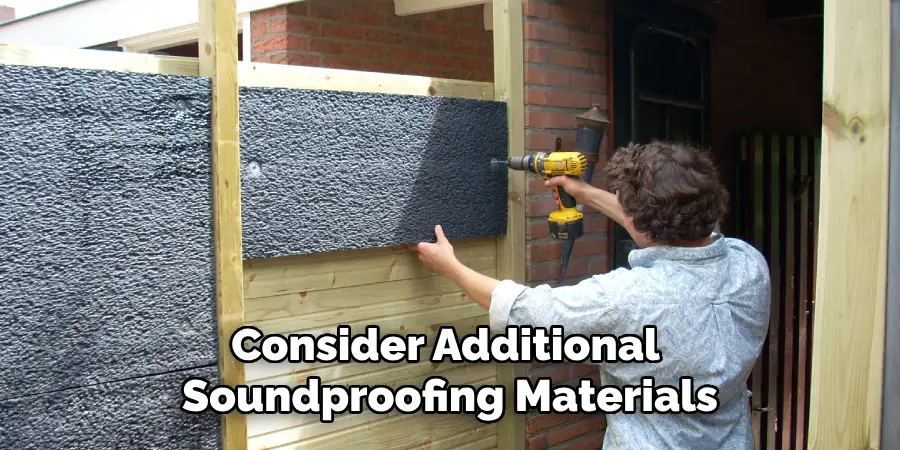
Continual assessment and willingness to adjust your strategy will ensure that your outdoor space remains serene and enjoyable. Remember, soundproofing is often an iterative process, with improvements and adjustments making a significant difference over time.
By following these steps, you can effectively soundproof your fence and enjoy a more peaceful outdoor space.
5 Additional Tips and Tricks
- Install Acoustic Panels: Acoustic panels designed for outdoor use can significantly reduce noise levels. These panels are crafted from sound-absorbing materials and can be attached directly to your existing fence, offering not just noise reduction but also a visual improvement.
- Use Mass-Loaded Vinyl: Mass-loaded vinyl (MLV) is a thin but heavy sheeting that can block sound effectively. Installing MLV on your fence acts as an added barrier to noise, essentially reflecting sound back toward its source.
- Add Dense Vegetation: Planting dense vegetation around your fence can help absorb and reduce noise levels. Trees, shrubs, and bushes all have sound-absorbing properties that make them excellent natural barriers against unwanted noise.
- Apply Soundproof Paint: Like acoustic panels, soundproof paint absorbs sound waves and reduces their intensity. This type of paint can be applied to your fence or added as a layer over existing paint. Not only does it reduce noise levels, but it also adds a protective coating to your fence.
- Utilize Natural Features: Incorporate natural features like slopes or hills into your soundproofing strategy. These natural barriers can help deflect and absorb noise, reducing the impact of sound on your fence.
With these additional tips and tricks, you can further improve the noise-reduction capabilities of your fence.
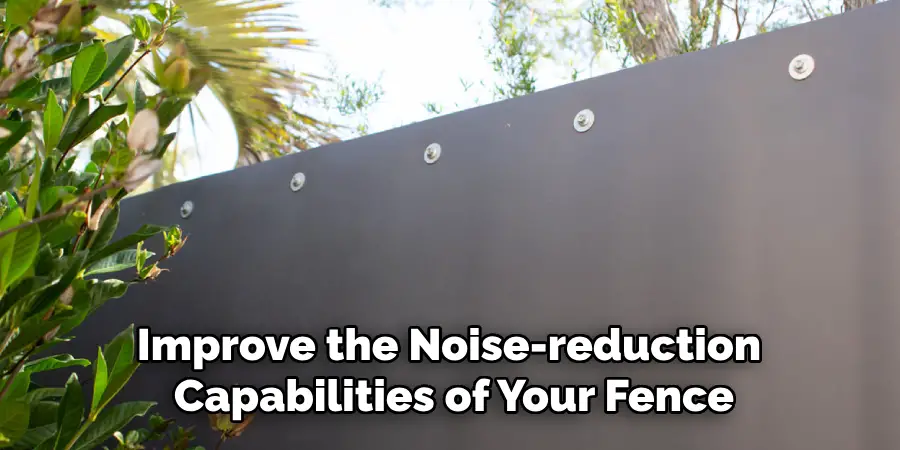
5 Things You Should Avoid
- Ignoring Local Regulations: Before making any modifications to your fence, it’s crucial to be aware of local zoning laws and homeowners association rules. Failure to adhere to these can result in fines and being required to undo your work.
- Choosing the Wrong Materials: Not all materials are effective for soundproofing. Avoid using porous, lightweight materials that fail to block or absorb sound effectively. Focus on density and mass which are key factors in sound reduction.
- Overlooking Gaps and Holes: Sound can travel through the smallest of openings. When soundproofing your fence, ensure that gaps, holes, and spaces between the panels are properly sealed. Overlooking these can significantly undermine your soundproofing efforts.
- Neglecting Maintenance: Outdoor soundproofing solutions can deteriorate over time due to weather conditions. Neglecting regular maintenance checks and repairs can decrease their effectiveness at blocking sound.
- Underestimating Professional Advice: Soundproofing a fence can be complex and may benefit from expert input. Avoid the assumption that all DIY solutions will yield professional results. Consulting with a soundproofing expert can provide customized solutions and potentially save time and resources.
By avoiding these common pitfalls, you can enhance the efficacy of your fence’s soundproofing capabilities, creating a more peaceful outdoor environment.
What Fabric Blocks Sound?
Certain fabrics, such as canvas, burlap, felt, and velvet, have sound-absorbing properties that can help reduce noise levels. However, the effectiveness of these fabrics in blocking sound depends on their density and thickness. Thicker and heavier fabrics tend to be more effective at absorbing sound waves.
Additionally, some specialized acoustic fabrics are designed specifically for noise reduction and can be even more effective in blocking sound. These fabrics usually have a tightly woven or felted structure that helps trap and absorb sound waves.
It’s important to note that while certain fabrics may help reduce noise levels, they are not a complete solution for soundproofing. Other methods, such as the ones mentioned above, should also be utilized for maximum effectiveness.
Is Cardboard Soundproof?
Cardboard is not a soundproof material. Its porous and lightweight structure allows sound waves to pass through easily, making it ineffective at blocking or absorbing noise. However, cardboard can create makeshift acoustic panels by layering them with other dense materials such as mass-loaded vinyl or acoustic foam.
It’s important to remember that using cardboard for soundproofing should only be considered a temporary solution and should not be relied upon for long-term noise reduction. Other soundproofing methods, such as those discussed in this content, are more effective and should be used for permanent results.
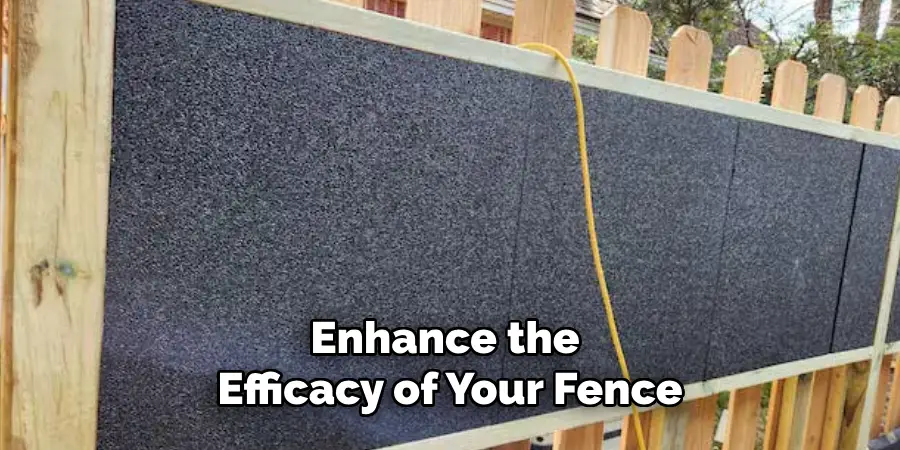
Conclusion
Soundproofing a fence requires a strategic combination of materials and methods to effectively reduce noise pollution. By incorporating acoustic panels, mass-loaded vinyl, dense vegetation, and soundproof paint and utilizing natural landscapes, homeowners can significantly mitigate the impact of external sounds.
It is crucial, however, to avoid common pitfalls such as neglecting local regulations, using ineffective materials, overlooking gaps, neglecting maintenance, and underestimating the value of professional advice.
While no single solution offers a panacea for noise pollution, a thoughtful approach that combines multiple soundproofing techniques can create a serene and quiet outdoor environment.
Remember, soundproofing is not about creating silence but reducing noise intrusion to comfortable levels. With patience and careful planning, achieving a peaceful backyard oasis is within reach.
Hopefully, this content has provided valuable insights and practical tips for how to soundproof a fence. So go ahead and get started on creating your very own peaceful backyard oasis today! Happy soundproofing!
About
Outdoor Fixes is a distinguished figure in the world of Diy design, with a decade of expertise creating innovative and sustainable Diy solutions.
His professional focus lies in merging traditional craftsmanship with modern manufacturing techniques,
fostering designs that are both practical and environmentally conscious. As the author of diy,
outdoorfixes delves into the art and science of outdoorfixes-making, inspiring artisans and industry professionals alike.
Education RMIT University
(Melbourne, Australia) Associate Degree in Design (Outdoor Fixes) Focus on sustainable design, industry-driven projects,
and practical craftsmanship. Gained hands-on experience with traditional and digital manufacturing tools, such as CAD and CNC software.
Nottingham Trent University
(United Kingdom) Bachelor’s in outdoorfixes.com and Product Design (Honors) Specialized in product design with a focus on blending creativity with production
techniques. Participated in industry projects, working with companies like John Lewis and Vitsoe to gain real-world insights.
Publications and Impact
In diy, Outdoor Fixes his insights on indoor design processes, materials, and strategies for efficient production.
His writing bridges the gap between artisan knowledge and modern industry needs, making it a must-read for both budding designers and seasoned professionals.

